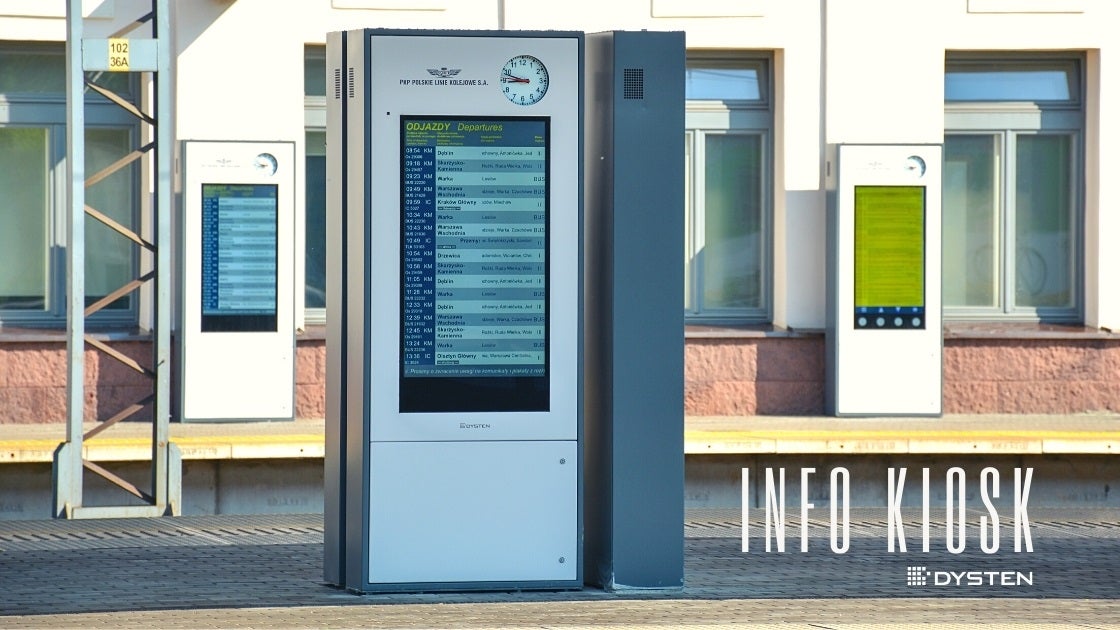
The info kiosk is an interactive information point that makes it easier for users to travel. The main purpose of such devices, being a part of the passenger information system, is to showcase detailed and relational timetables – current, real-time, as well as future ones.
The device not only displays a comprehensive schedule of arrivals and departures but also provides the users with a remarkable scope of information that the carrier wants to share with travellers. The user can scroll the content by using built-in buttons. They can familiarise themselves with traffic data, as well as select the file that he or she wants to view.
Such information kiosk can be adjusted to various needs of travellers, mainly thanks to such features as multi-language support, ability to enlarge fonts for visually impaired users, and voice message mode. The machine can charge mobile devices, scan tickets in order to display the map leading to the desired platform or transfer timetable information to a smartphone. The info kiosk is also adapted to display graphic, text, or video-based advertisements. It all depends on the needs and plans of a given public transport operator.
Info kiosks that are made with Smart Rail and Smart City systems in mind may be combined with passenger information systems utilized by the carrier to gather and display data received from the system. They are installed in places that are vital for travellers: on platforms, stations, railway stations, or in communication routes, such as footbridges or passageways.
How do we create info kiosks for railway stations and platforms?
Within each and every info kiosk, a number of solutions are implemented to increase its reliability. The device is designed to work non-stop – 24 hours a day, both inside and outside, in all weather conditions. The operation in various environmental conditions is possible thanks to an advanced system of heating and cooling – the kiosk is equipped with a heating unit, internal fans, and an air conditioner. The buttons that allow for interacting with users also react to touch with a hand being covered with, for example, gloves.
The info kiosk is equipped with a set of sensors. They measure internal temperature, humidity, the brightness of external lighting, door opening, glass breakage, and shocks. Detailed device status reporting to the server of the utilized passenger information system enables a rapid response of the staff to such events as acts of vandalism or unauthorized access.
Due to the importance of the device and the fact that it works 24/7, redundant power supply (secondary independent power supply) has been implemented, which significantly affects the reliability of the display. Moreover, electrical protections for “cold start” and “soft start” systems have been introduced.
The info kiosk is based on a large-format full HD LCD-TFT monitor with high brightness. It guarantees a clear image even in direct sunlight. Depending on the selected screen size and purpose, the housing can be shaped as a vertical or horizontal totem. Screen size, shape, form and housing colour, as well as additional features and functions, are later on adjusted to the needs of the operator.
The Dysten Company, a producer of information kiosks for passenger information systems, manufactures devices in accordance with standards and technical requirements of the interoperability specification relating to the accessibility of the European Union rail system for disabled people and people with reduced mobility.

